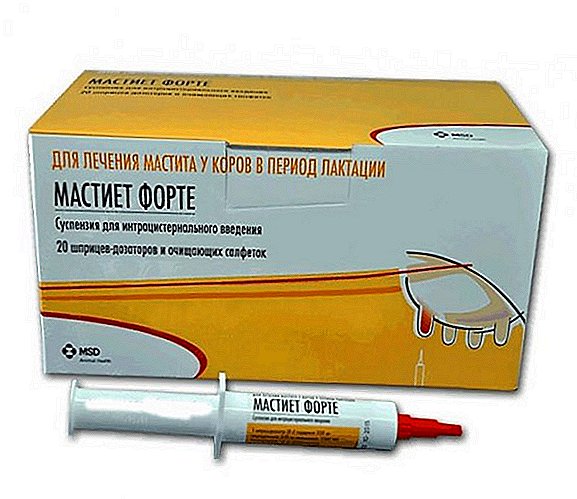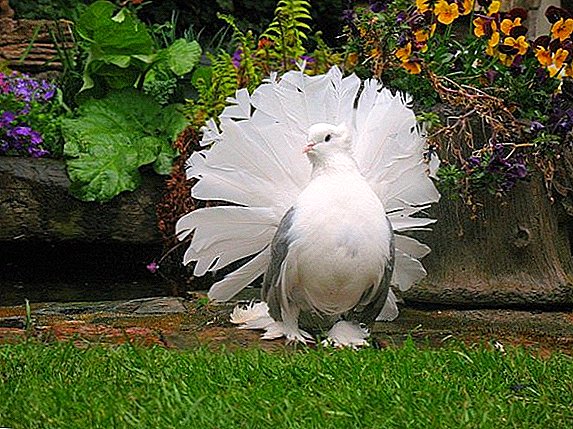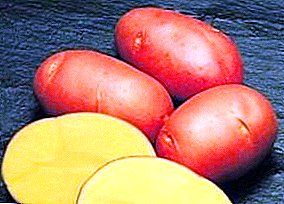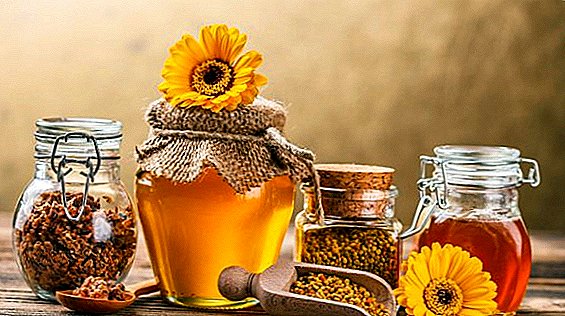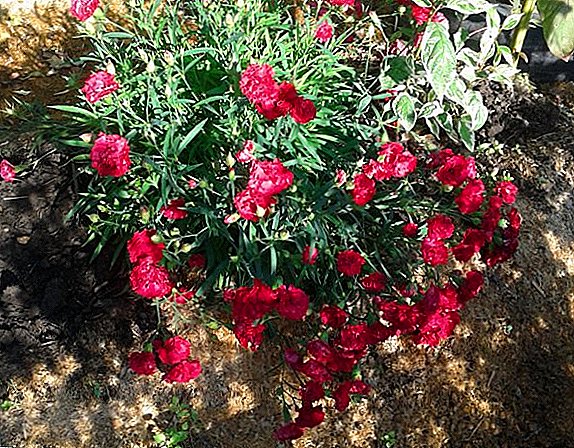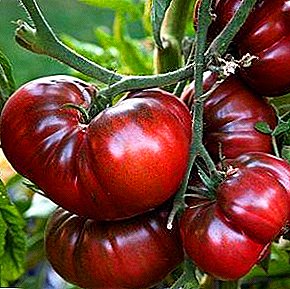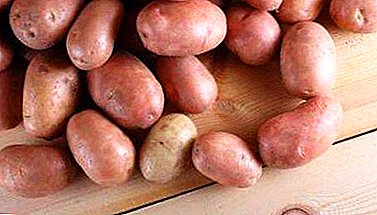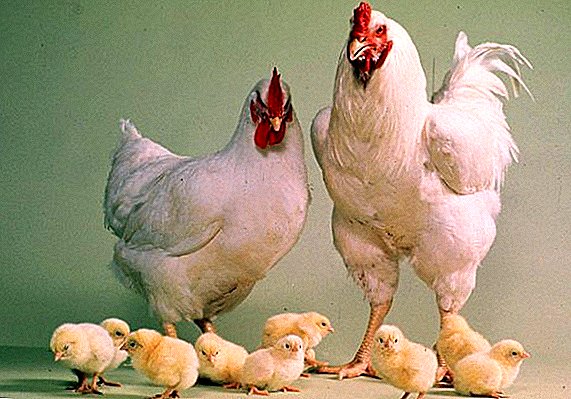 Chicken is one of the most common poultry mainly because its content is not particularly difficult. Nevertheless, the conditions that must be ensured for feathered herds, largely depend on the purpose for which chickens are raised - for eggs, meat or young stock production. Let us consider in more detail the last option.
Chicken is one of the most common poultry mainly because its content is not particularly difficult. Nevertheless, the conditions that must be ensured for feathered herds, largely depend on the purpose for which chickens are raised - for eggs, meat or young stock production. Let us consider in more detail the last option.
What is the parent flock
Under the parent herd in relation to chickens should be understood such a livestock of poultry, which is contained in order to obtain the maximum number of high-quality fertilized eggs that can give healthy and viable offspring.
Did you know? In order to carry eggs, the chicken does not need a rooster. These eggs are great for food use, but chickens will not hatch out of them, no matter how much they hatch. It is almost impossible to distinguish the egg in which the embryo develops from the “empty” with the naked eye. To date, there are only two ways to diagnose: scanning the eggs with a directional beam (the so-called ovoscopy), or selectively opening the eggs, and a visual assessment of the contents.Over the several thousand years that have elapsed since the beginning of the domestication of the hen, by countless trial and error, people have gradually determined the most optimal conditions for obtaining the same number of eggs from the same number of hens that are suitable for successful incubation.

The ratio of chickens and roosters
It is clear that the economic result directly depends on the correct configuration of the herd. Since the eggs are carried only by chickens, the number of cockerels among birds ideally should tend to a minimum, but on the other hand, the lack of stronger sex will lead to an increase in the number of “empty” eggs.
One of the advantages of chickens compared to some other agricultural birds is that they are not monogamous, that is, they do not create pairs. This, in turn, means that the ratio of roosters and hens in the herd can be significantly increased in favor of the latter.
Important! For optimal performance of "productive" egg production, it is enough to have one rooster per ten chickens (for comparison, the ratio between geese and ducks is 1: 4, but one turkey can serve from 16 to 25 females).
It should also be understood that the larger the flock, the higher the likelihood that the “knockout” of one of the roosters will not affect the overall results (the value of a single rooster in a family of a dozen heads is significantly greater than each of the four males who serve forty layers).

However, in too large poultry stock conflicts occur much more often, and the likelihood of the spread of various infections also increases. Therefore, even in large farms, it is recommended that all existing poultry be divided into groups of 33-44 individuals and that such “families” should be kept separate from each other.
Content
In order to ensure a high percentage of healthy chickens, in addition to the competent formation of the parent flock, it is also necessary to ensure the optimal housing conditions for the bird.
In particular, feathery livestock needs a clean and balanced diet, but also we must not forget about the implementation of preventive measures aimed at preventing the spread of infectious diseases.
Learn how to carry out the crossing of chickens at home, on what grounds should be selected chickens to continue the race.
Room processing
Most often, the birds are sick because of their non-compliance with the owner of basic sanitary and hygienic requirements.

Cleaning the house will be much easier if you worry in advance about following a few simple rules:
- floor covering made of non-slip, safe (non-toxic) and warm material (for example, linoleum or tongue-and-groove boards) makes it possible not to use additional litter, which not only makes cleaning the floor easier, but also saves money on the purchase of hay, straw, sawdust and other consumables;
- the walls in the house are best pre-treated with lime, it will serve as an excellent prevention of fungal and other infections;
- nests and perches should be equipped in such a way that they can be easily moved (lifted on adjustable slats) during harvesting;
Learn how to build a winter and portable chicken coop, how to equip nests, perches, feeders, drinkers, ventilation, heating in it.
- In no case should the feed be poured directly onto the floor of the house, feeders must be equipped in the room, separately for dry and wet food, and they must be installed on a raised platform so that the birds do not get inside with their feet. The feeders must be cleaned regularly and the remnants of food removed;
- Before entering the house, you must wipe your feet very carefully, as the owners themselves often bring dirt and parasites into the chicken coop.

If the parent flock is kept in free-range conditions, the house can be cleaned less frequently, but for birds that are constantly inside the premises, this procedure should be carried out daily.
Important! The hen house should always be dry and clean, the room should be well ventilated, but drafts are completely unacceptable.
In addition to the usual cleaning, at least once a year (and preferably quarterly) it is necessary to carry out a complete disinfection of the hen house in order to fight ticks, fleas and other small enemies of the feathered herd. To carry out the procedure, it is necessary to remove its inhabitants from the premises (in the warm season it is not difficult to do this, so it is worth planning the event so that it will be completed by the onset of frost).
Different substances are used as a means of processing, all of them have their advantages and disadvantages, so that each farmer can make a choice for himself, guided by his own preferences and experience. Below is a brief overview of possible options.

| Disinfectant | Efficiency mark |
| Apple vinegar | Non-toxic, not expensive, but its efficiency is rather low. |
| Formalin | Effective, but very toxic (in Europe it is generally forbidden to use at home). |
| Bleaching powder | Effective, but toxic, in addition, it is difficult to calculate the time of action. |
| Potassium permanganate | Effective, however, at present, the drug is quite difficult to purchase without a special prescription. |
| Iodine | It is considered one of the safest, you can not even remove the bird from the hen house. |
| Specialized preparations ("Gluteks", "Virotsid", "Ekitsid-S", "Delegol", etc.) | Effective, safe, easy to use, but the procedure will cost a little more. |
Even more expensive, but the most convenient and safest option is to invite a team of specialists to disinfect the house.

Proper diet
Drawing up the right ration for poultry is an entire science, and the diet and composition of the feed largely depends on the direction of use of the livestock - for meat, eggs or chickens.
Important! Nutrition has two main features. First, in contrast to the case of raising birds for meat, the farmer needs to take care that the bird does not gain excess weight, which means that the amount of protein must be reduced, and secondly, for the correct formation of the egg (like the shell, and its contents) the body of the club needs to have much more significant reserves of calcium than its companions to be slaughtered.
It should also be borne in mind that if the layers need to provide the maximum amount of calcium and phosphorus (as is well known, calcium is simply not absorbed when there is a shortage of phosphorus), then an excess of these elements is harmful for the males.
This feature is one of the reasons why until a certain point (full sexual maturity), chickens and males should be raised and fed separately from each other.
The components included in the diet of chickens, in general, are standard, but their ratio is adjusted depending on the age and size of the birds, therefore, starting from the second week of life, the livestock of the parent flock is subject to regular weighing.

In addition, to control the weight of birds in the parent flock, many farmers recommend using a kind of “fasting days”: the birds are fed for five days and then kept without food for two days.
Below are the approximate rules for the preparation of the diet for the parent flock of chickens:
| Feed Type | What may be included | Approximate share in the diet |
| Corn | barley; oats; millet; corn; wheat; buckwheat; seeds, meal, sunflower cake, flax | 60% |
| Green feed | clover; nettle; alfalfa; stalks and leaves of peas; dill; young grass; needles (especially in winter, when there is no other greenery) | 19% |
| Root vegetables, other vegetables, fruits | beet; carrot; potatoes; turnip; pumpkin; apples | 15% |
| Protein food of animal origin | dairy products (whey, kefir, cottage cheese); meat and bone meal; meat waste; fish waste; fish flour; bones; worms, beetles and other insects | 5% |
| Mineral Supplements | ash; a piece of chalk; salt; gravel; shell rock; limestone | 1% |
The diet of the parent flock also needs to be adjusted depending on the season, as well as on whether the bird has access to free range (in the wild, chickens have the opportunity to get green fodder and “goodies” of animal origin).

Vaccination
Vaccination is the most effective way to prevent the most dangerous diseases, and this rule is equally fair for both people and pets.
Parent flocks are usually vaccinated from:
- bird encephalomyelitis, also known as epidemic tremor (vaccination is done no earlier than five weeks before laying;
- infectious bronchitis (during the laying period, vaccination is prohibited);
- salmonellosis (it is important here not so much to prevent the disease of the bird itself as to prevent infection of the chicken);
- mycoplasmosis (usually used live vaccine MG 6/85).
But vaccination against such a dangerous parasitic disease as coccidiosis is more often used not for parental individuals, but directly for chickens (young animals receive the vaccine on the sixth day of life, moreover, coccidiostatics, which are considered more effective than the vaccine, are simply added chickens in feed).
Find out what to do if chickens go bald, fall to their feet, peck eggs, peck a rooster, bleed each other, cough, wheeze, sneeze.
During the laying period, any medication should be used with extreme caution, as is the case with vaccines. It is known that many medicinal and prophylactic drugs used for chicken can subsequently adversely affect the development of chickens.

The danger of transmitting an infectious disease from a layer to the future chick is extremely high, so all individuals of the parent flock that show signs of any dangerous disease should be ruthlessly excluded from breeding.
Did you know? Vaccination as a method of preventing diseases was first proposed by a French microbiologist and chemist Louis Pasteur. And, as it often happens, accident has helped the scientist to make one of the greatest discoveries in medicine. And ... chicken. Louis Pasteur studied chicken cholera, for which he, of course, needed sick birds. But one day, going to rest, the scientist gave his wards to a not very attentive assistant, who forgot to introduce the next cholera vibrio to the birds. When, on returning, Louis Pasteur again infected his birds with cholera, they ached a little, but then recovered unexpectedly, since they already had antibodies to the disease, obtained after the initial “mild” acquaintance with its pathogen.
Proper egg production stimulation
In the wild, birds do not lay eggs all year round, but in a farm environment, regular flock production is required from the domestic herd, regardless of the season and other environmental factors.

In order to "deceive nature," mankind has long learned to use a number of different tricks. These include, in particular:
- Increase the length of daylight. Special lighting mode, provided by installing additional lamps in the hen house, should be organized in such a way that the light layers should be at least 12-14 hours a day. However, at the first stage of the “start-up” of the parent flock, it is advised to cover the house for 23 hours a day.
- Heating house in the winter. Cold is perceived by the bird as the beginning of a period when eggs should not be laid, therefore unheated poultry houses do not allow using egg production as efficiently as possible.
- Availability of free space. Planting hens in the hen house too heap has a negative effect on egg production rates, so each wedge must have at least 1 square meter of personal space in the house, at least 20 cm perch, and the number of nests should be calculated at least one to four to five chickens.
- Strict adherence to feedings. Food from the parent flock should not just be perfectly balanced. It is equally important to give it always at the same time. This calms the poultry and directs its thoughts to the direction necessary for the farmer.

Nevertheless, when stimulating egg production, it is necessary to take into account certain objective things, in particular, the breed and age of the herd. It is impossible to demand more from a layer than it is able to give.
In addition, it is very important to start stimulating egg production in a timely manner, since too early onset of egg production turns into “giving out” of small eggs, often unsuitable for incubation. Yes, and for the health of layers such a rush can also result in problems, up to and including the loss of the oviduct.
Did you know? As a non-standard way to increase the productivity of the parent flock, poultry farmers recommend to put a few oat kernels in the litter for the birds (if it is used in the hen house). It is noticed that digging in the straw in order to search for the cherished delicacy launches certain processes in the body of the birds, which for some reason are expressed in more frequent matings.
Thus, the content of the parent flock of chickens involves compliance with well-defined and, in general, quite logical and understandable requirements. Armed with the necessary knowledge, showing a little care and patience, any novice poultry farmer has every chance to achieve good results in this field.
How to grow the parent flock: video



